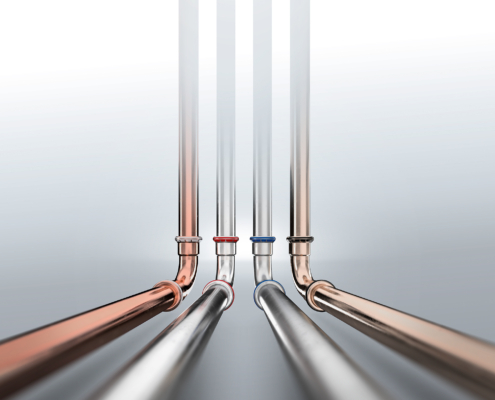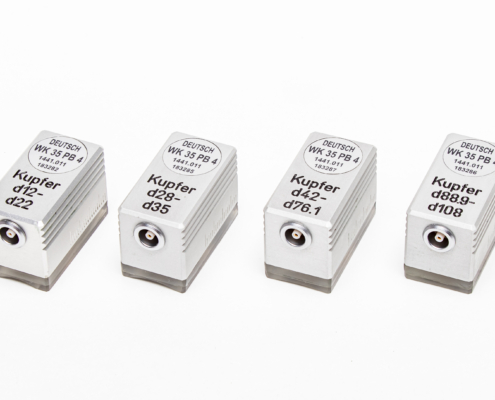ECHOGRAPH 1095: Testing of Press-Fit Joints
Wuppertal, Germany, February 8, 2021
ECHOGRAPH 1095: Testing of Press-Fit Joints
The globally active Geberit Group is the European market leader for sanitary products. Geberit has a strong local presence in most European countries and can therefore offer unique added value in the field of sanitary technology as well as in the area of bathroom ceramics.
The manufacturing capacities comprise 29 production plants, six of which are overseas. The group headquarters is located in Rapperswil-Jona, Switzerland. With approximately 12,000 employees in around 50 countries, Geberit achieved sales of CHF 3.0 billion in 2020. Geberit shares are listed on the SIX Swiss Exchange and have been a component of the SMI (Swiss Market Index) since 2012. Geberit uses the EST5 insertion depth measuring device to check insertion depths on pressed Geberit Mapress fittings in drained metallic piping systems. It enables the press connections to be checked directly after installation. Possible leaks can thus be located and repaired at an early stage and before the piping system is put into operation. The EST5 device from Geberit consists of several customised KARL DEUTSCH products: In addition to the ECHOGRAPH 1095 ultrasonic flaw detector, several special probes and miniature wedges are used to adapt to different geometries and materials of Geberit Mapress fittings. Ultrasonic testing is based on plate waves that are reflected at the pipe end in the pressed joints. Refraction angles of the plate wave of 90° are generated by means of adapted wedges.
For an optimum test result, configuration settings were defined in the KARL DEUTSCH application technology laboratory for each test situation, checked on test pieces and optimised. The EST5 base unit ECHOGRAPH 1095 is delivered with these configurations stored exworks at KARL DEUTSCH, additional presettings and a customer-specific start screen with Geberit logo. The presettings include, for example, the assignment of the function keys with a configuration browser and the activation of password protection. The user can open the preset data sets and carry out further adaptation to the test situation. However, overwriting the data sets or adjusting test-relevant parameters is not possible due to the activated password protection.






